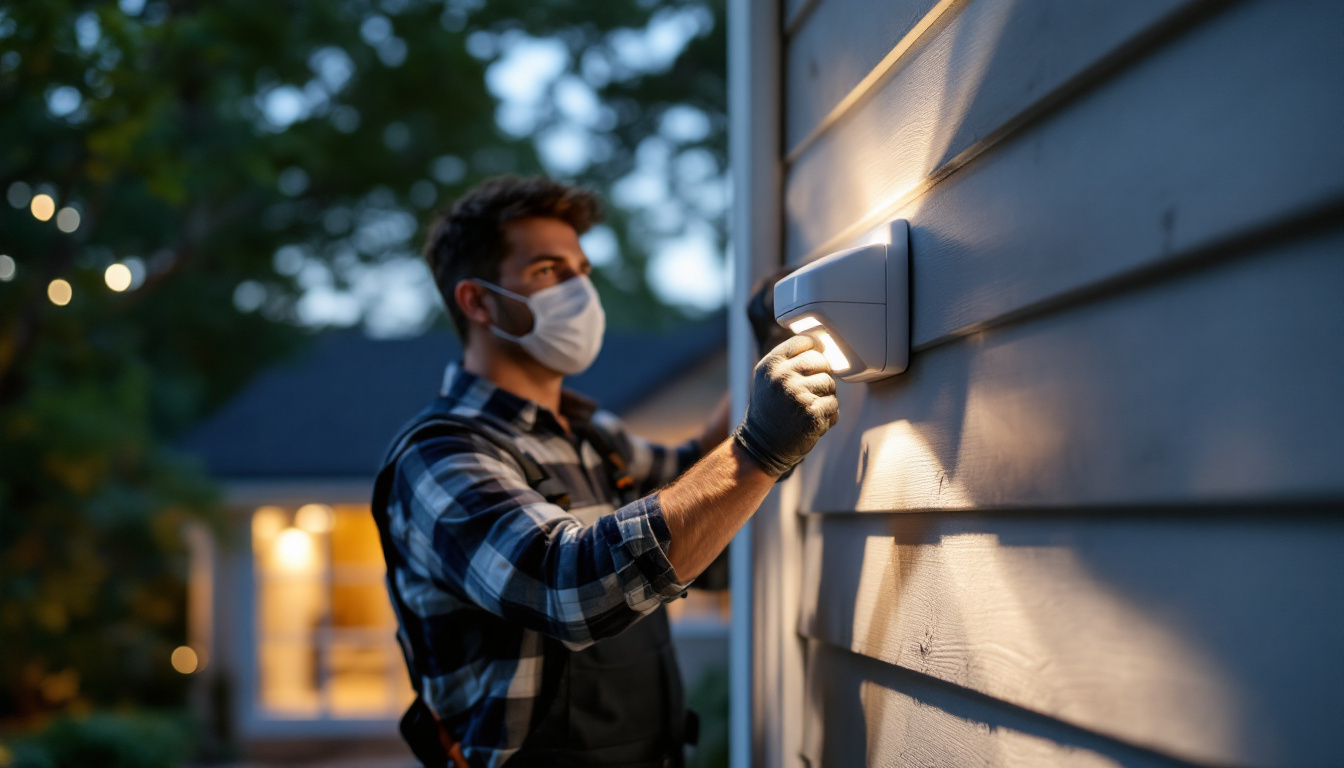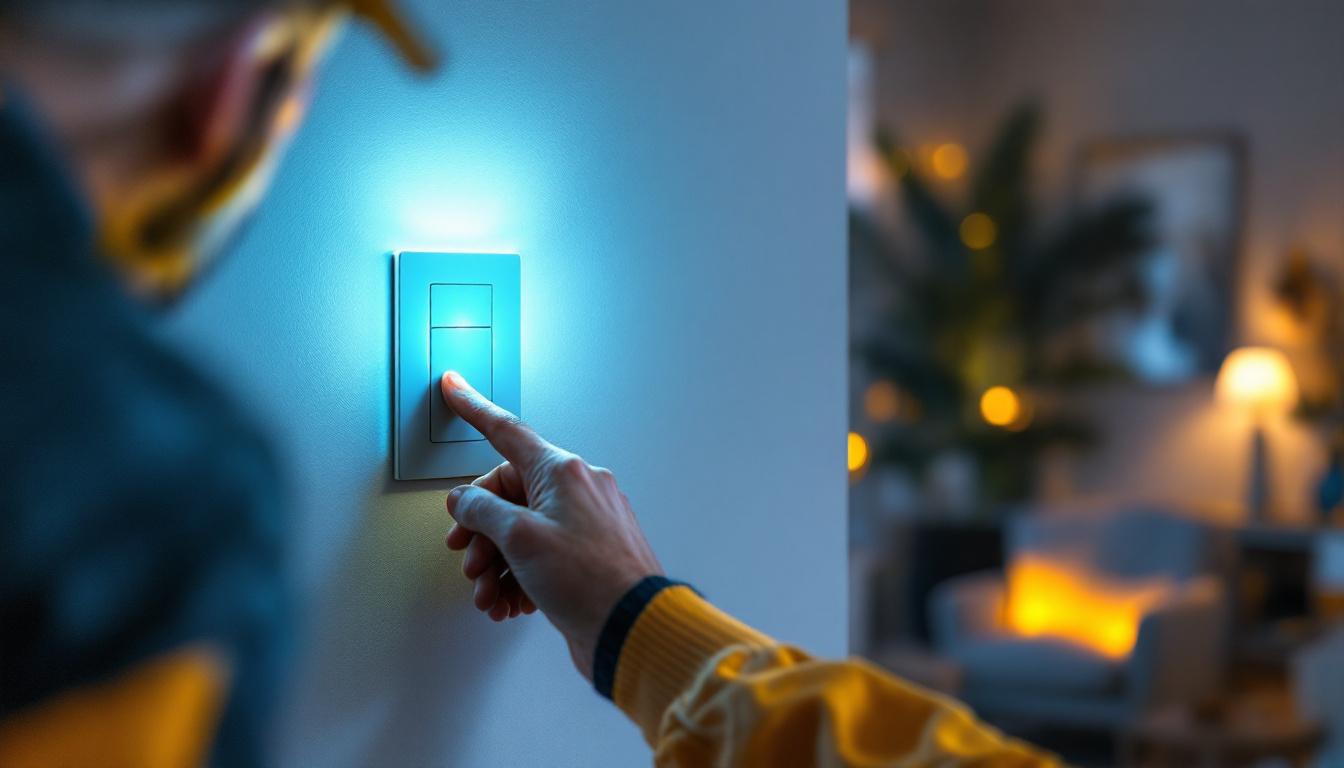
In the realm of outdoor lighting, motion detectors have become indispensable tools for lighting contractors. These devices not only enhance security but also contribute to energy efficiency and convenience. Understanding the essentials of outdoor motion detectors is crucial for contractors aiming to deliver top-notch services to their clients. This article delves into the key aspects of outdoor motion detectors, including their types, installation tips, and best practices.
Outdoor motion detectors are devices designed to detect movement in a designated area and activate lighting systems accordingly. They are commonly used in residential and commercial settings to provide safety and security. By understanding the various types of motion detectors available, lighting contractors can make informed decisions about which products to recommend and install. These devices not only enhance security by illuminating dark areas but also serve as a deterrent to potential intruders, creating a safer environment for homeowners and business operators alike.
There are several types of motion detectors, each with its unique technology and application. The most common types include passive infrared (PIR), microwave, and dual technology detectors. Each type has its advantages and disadvantages, making it essential for contractors to choose the right one based on the specific needs of the installation site. For instance, while PIR detectors are excellent for open spaces, microwave detectors may be more suitable for narrow pathways or areas with obstructions, thus showcasing the importance of site assessment in the selection process.
PIR detectors are the most widely used type of motion sensor. They work by detecting changes in infrared radiation, which is emitted by warm objects, such as humans and animals. When a warm body moves within the sensor’s range, the detector triggers the lighting system. PIR detectors are known for their reliability and low power consumption, making them an excellent choice for outdoor applications. Additionally, many modern PIR detectors come equipped with adjustable sensitivity settings and timers, allowing users to customize their operation based on specific environmental conditions and personal preferences, thus enhancing their functionality and efficiency.
Microwave detectors operate by emitting microwave signals and measuring the reflection of those signals. Unlike PIR detectors, they can detect movement through obstacles, making them suitable for areas where line-of-sight is obstructed. However, they may be more prone to false alarms caused by environmental factors, such as wind or rain. To mitigate these issues, many microwave detectors include advanced algorithms that help differentiate between genuine movement and environmental disturbances. This technology not only improves the accuracy of detection but also extends the lifespan of the device by reducing unnecessary activations. Furthermore, some models can be integrated with smart home systems, allowing for remote monitoring and control, which adds a layer of convenience for users seeking enhanced security measures.
When selecting outdoor motion detectors, several key features should be taken into account. These features not only affect the performance of the detectors but also influence the overall user experience. Understanding these features can help contractors provide better recommendations to their clients.
The detection range of a motion detector is a critical factor that determines how effectively it can monitor an area. Most outdoor motion detectors have a range of 30 to 100 feet, but this can vary based on the type of sensor and its mounting height. Contractors should assess the specific needs of the installation site to choose a detector with an appropriate range.
Adjustable sensitivity settings allow users to customize the motion detector’s responsiveness. This feature is particularly useful in outdoor environments where animals or moving foliage might trigger false alarms. By adjusting the sensitivity, contractors can help clients minimize unnecessary activations while still ensuring adequate security.
Given the outdoor application, weather resistance is a crucial feature for motion detectors. Look for devices that are rated for outdoor use and can withstand various weather conditions, including rain, snow, and extreme temperatures. A durable, weather-resistant motion detector will ensure longevity and reliable performance, reducing the need for frequent replacements.
Proper installation is vital for the effective functioning of outdoor motion detectors. Lighting contractors must follow best practices to ensure that the devices operate optimally and meet the client’s expectations. Here are some essential installation tips to consider.
The placement of motion detectors significantly impacts their performance. Ideally, they should be installed at a height of 6 to 8 feet, allowing for a wide detection range while minimizing the risk of false alarms. Additionally, positioning the detectors in areas with a clear line of sight will enhance their effectiveness. Avoid placing them near sources of heat, such as air conditioning units or direct sunlight, as this can lead to inaccurate readings.
After installation, it is essential to test and calibrate the motion detectors to ensure they function correctly. This process involves walking through the detection zone to verify that the lights activate as intended. Contractors should also adjust the sensitivity settings based on the specific environment to optimize performance. Regular testing and calibration can help identify any issues early on and ensure long-term reliability.
Outdoor motion detectors should seamlessly integrate with existing lighting systems. Contractors should consider the type of lighting fixtures being used and ensure compatibility with the motion detectors. For example, LED lights are often preferred due to their energy efficiency and longevity. Additionally, incorporating smart technology can enhance the functionality of motion detectors, allowing for remote monitoring and control.
While outdoor motion detectors offer numerous benefits, they are not without challenges. Lighting contractors may encounter various issues during installation and operation. Understanding these challenges and their solutions can help ensure a smooth process and satisfied clients.
False alarms are one of the most common challenges associated with motion detectors. Environmental factors, such as wind, rain, or passing animals, can trigger unnecessary activations. To mitigate this issue, contractors should recommend detectors with adjustable sensitivity settings and consider the placement of the devices carefully. Additionally, educating clients on the importance of proper calibration can help reduce false alarms.
Another challenge is the limited detection range of some motion detectors. If a detector is unable to cover the entire area of interest, it may leave blind spots that compromise security. Contractors should assess the specific requirements of the installation site and select detectors with an appropriate range. In cases where extensive coverage is needed, multiple detectors may be necessary to ensure comprehensive monitoring.
Power supply issues can also pose challenges for outdoor motion detectors. Some devices rely on batteries, which may require frequent replacements, while others need a wired connection to a power source. Contractors should evaluate the power supply options available and choose devices that align with the client’s preferences and the installation environment. Solar-powered motion detectors can be a viable option for remote areas without easy access to electricity.
Incorporating outdoor motion detectors into lighting systems offers numerous benefits for both contractors and clients. Understanding these advantages can help contractors communicate their value effectively.
One of the primary benefits of outdoor motion detectors is the enhanced security they provide. By automatically activating lights when movement is detected, these devices deter potential intruders and create a safer environment. This added layer of security is particularly valuable for residential properties, commercial establishments, and outdoor spaces.
Outdoor motion detectors contribute to energy efficiency by ensuring that lights are only activated when needed. This feature helps reduce energy consumption and lowers electricity bills for clients. By promoting energy-efficient solutions, contractors can position themselves as environmentally conscious professionals who prioritize sustainability.
The convenience offered by outdoor motion detectors cannot be overstated. Clients can enjoy the peace of mind that comes with automated lighting, eliminating the need to fumble for switches in the dark. Furthermore, integrating motion detectors with smart home systems allows for remote control and monitoring, enhancing the overall user experience.
The field of motion detection technology is continually evolving, with new innovations emerging regularly. Staying informed about these trends can help lighting contractors remain competitive and offer cutting-edge solutions to their clients.
Smart motion detectors are gaining popularity due to their advanced features and connectivity options. These devices can be integrated with smart home systems, allowing users to control and monitor their lighting remotely through smartphones or voice assistants. As technology continues to advance, contractors should consider recommending smart motion detectors to clients seeking modern solutions.
Artificial intelligence (AI) is making its way into motion detection technology, enhancing the accuracy and reliability of these devices. AI-powered motion detectors can learn patterns of movement and differentiate between humans, animals, and inanimate objects, significantly reducing false alarms. Contractors should keep an eye on developments in AI technology to provide clients with the most effective solutions.
Energy harvesting technologies are emerging as a sustainable alternative for powering motion detectors. These systems can harness energy from environmental sources, such as solar or kinetic energy, reducing reliance on traditional power sources. As energy efficiency becomes increasingly important, contractors should explore energy harvesting options to offer clients innovative and eco-friendly solutions.
Outdoor motion detectors are essential tools for lighting contractors, providing enhanced security, energy efficiency, and convenience for clients. By understanding the various types of detectors, key features, installation best practices, and common challenges, contractors can deliver exceptional service and solutions. As technology continues to evolve, staying informed about the latest trends will ensure that contractors remain competitive in the ever-changing landscape of outdoor lighting. Embracing these advancements will not only benefit contractors but also enhance the overall experience for clients, leading to satisfied customers and successful projects.
Ready to elevate your lighting projects with the latest in outdoor motion detection technology? Look no further than LumenWholesale, where we provide lighting contractors with superior, spec-grade lighting products at unbeatable wholesale prices. Our extensive selection of motion detectors is designed to meet the highest industry standards, ensuring you deliver enhanced security, energy efficiency, and convenience to your clients. With free shipping on bulk orders, you can access premium lighting solutions at the best value — all without hidden fees or compromises. Don’t miss out on the perfect blend of quality, affordability, and convenience. Visit LumenWholesale today and experience wholesale lighting at the best value for your next project.

Discover how dimmable light switches can be a game-changer for lighting contractors, offering a cost-effective solution that enhances energy efficiency and client satisfaction.

Discover the significance of the A-19 bulb for lighting contractors in this insightful article.

Discover how LED 4ft shop lights are revolutionizing modern lighting solutions with energy efficiency, durability, and superior illumination.

Discover how LED string lights are revolutionizing outdoor spaces and giving lighting contractors a competitive edge.